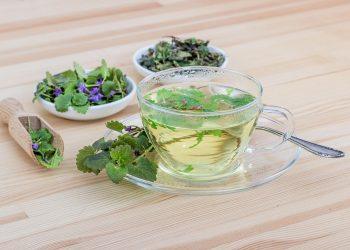In today’s fast-paced, always-connected world, it can feel nearly impossible to find a moment of peace. Between the endless notifications on our phones, the constant demands of work, and the myriad distractions vying for our attention, many of us find ourselves living on autopilot. But what if I told you that a simple practice could help you reconnect with the present moment, reduce stress, and enhance your overall well-being? That practice is mindfulness.
Contents
What is Mindfulness?
At its core, mindfulness is the practice of paying attention to the present moment without judgment. It’s about being aware of your thoughts, feelings, and sensations as they arise, allowing you to experience life more fully. This isn’t just some new-age buzzword; it’s a practice rooted in ancient meditation traditions, particularly within Buddhism, and has gained significant traction in modern psychology.
The Science Behind Mindfulness
You might be wondering, “Does this really work?” Well, research suggests that it does. A meta-analysis published in JAMA Internal Medicine found that mindfulness meditation can lead to significant improvements in anxiety, depression, and pain (Goyal et al., 2014). The study reviewed 47 trials involving over 3,500 participants and concluded that mindfulness practices are effective for a variety of mental health issues.
But let’s break it down further. Mindfulness has been shown to:
-
Reduce Stress: Practicing mindfulness can lower cortisol levels, the hormone associated with stress. A study by Turakit et al. (2020) found that participants who engaged in mindfulness practices reported significantly lower stress levels compared to those who did not.
-
Enhance Focus: Regular mindfulness training can improve attention span and cognitive flexibility. A study published in the journal Psychological Science showed that participants who engaged in mindfulness meditation performed better on attention tasks than those who did not (Zeidan et al., 2010).
-
Improve Emotional Regulation: Mindfulness helps individuals become more aware of their emotions, allowing for better management of emotional responses. This can lead to healthier relationships and improved overall emotional health.
5 Practical Tips for Cultivating Mindfulness
Now that we’ve established the benefits, how can you weave mindfulness into your daily life? Here are five practical tips to get you started:
1. Start with Your Breath
One of the simplest ways to begin your mindfulness journey is to focus on your breath. Find a quiet place, sit comfortably, and take a few deep breaths. Notice the sensation of the air entering and leaving your body. If your mind starts to wander (and it will), gently bring your focus back to your breath. Try this for just five minutes a day and gradually increase the time as you become more comfortable.
2. Practice Mindful Eating
Eating is something we do multiple times a day, making it a perfect opportunity to practice mindfulness. Instead of rushing through meals, take the time to savor each bite. Notice the flavors, textures, and aromas. This not only enhances your eating experience but can also help with portion control and digestion.
3. Incorporate Mindfulness into Daily Routines
You don’t have to set aside hours for meditation. You can practice mindfulness during everyday activities. Whether it’s brushing your teeth, walking, or washing dishes, focus on the sensations and movements involved in the task. This simple shift can transform mundane activities into opportunities for mindfulness.
4. Use Guided Meditations
If you’re unsure where to start, guided meditations can be incredibly helpful. Apps like Headspace and Calm offer a variety of meditations tailored to different needs, whether it’s reducing anxiety, improving sleep, or enhancing focus. These resources can provide structure and support as you develop your practice.
5. Join a Mindfulness Group
Sometimes, having a community can make all the difference. Look for local mindfulness or meditation groups. Practicing with others can provide motivation and accountability, making it easier to stick with your mindfulness journey.
Myth vs. Truth: Debunking Common Misconceptions About Mindfulness
As mindfulness gains popularity, several myths have emerged. Let’s set the record straight:
Myth 1: Mindfulness is Just About Relaxation
Truth: While mindfulness can lead to relaxation, its primary purpose is to help you cultivate awareness. It’s not about zoning out or escaping reality; it’s about fully engaging with the present moment.
Myth 2: You Have to Empty Your Mind
Truth: Many people believe that mindfulness means having a completely clear mind. In reality, it’s normal for thoughts to arise during practice. The key is to notice these thoughts without judgment and gently bring your focus back to the present.
Myth 3: Mindfulness is Only for the “Spiritual”
Truth: Mindfulness is for everyone, regardless of spiritual beliefs. It’s a secular practice that can benefit anyone looking to improve their mental health and overall well-being.
Myth 4: Mindfulness Takes Too Much Time
Truth: Even a few minutes of mindfulness can make a difference. You don’t need to dedicate hours each day; consistency is more important than duration.
A Personal Journey: My Experience with Mindfulness
Let me share a bit about my own journey with mindfulness. A few years ago, I found myself overwhelmed with work and life responsibilities. Stress was becoming a constant companion, and I knew I had to make a change. That’s when I stumbled upon mindfulness.
At first, I was skeptical. I thought it was just another trend. But I decided to give it a shot. I started with simple breath awareness and gradually incorporated guided meditations into my routine. The results were surprising. Not only did I feel more relaxed, but I also noticed I was more present in my daily life. Conversations became richer, and I found joy in simple moments.
One of the most significant changes I experienced was during a particularly stressful week. Instead of spiraling into anxiety, I took a few moments to practice mindfulness each day. I would step outside, close my eyes, and focus on the sounds around me—the rustling leaves, distant laughter, and even the hum of traffic. It was grounding and helped me navigate that challenging week with greater ease.
Cultural and Historical Context
Mindfulness isn’t just a modern phenomenon; it has deep roots in various cultures. The practice can be traced back to ancient Buddhist traditions, where it was used as a means of cultivating awareness and compassion. However, in the West, mindfulness gained prominence in the late 20th century, thanks to pioneers like Jon Kabat-Zinn, who adapted mindfulness practices for therapeutic use.
Kabat-Zinn founded the Mindfulness-Based Stress Reduction (MBSR) program at the University of Massachusetts in 1979. His work helped bridge the gap between ancient wisdom and modern science, paving the way for mindfulness to be embraced in clinical settings. Today, mindfulness is used in various therapeutic contexts, including pain management, anxiety treatment, and even addiction recovery.
The Future of Mindfulness
As we continue to navigate the complexities of modern life, the importance of mindfulness cannot be overstated. It offers a powerful antidote to the chaos that often surrounds us. With ongoing research supporting its efficacy, mindfulness is likely to become an integral part of mental health care and wellness practices.
But let’s be real: mindfulness isn’t a silver bullet. It requires commitment and practice. It’s not about achieving a perfect state of calm; it’s about creating space for awareness and acceptance in your life.
Conclusion: Taking the First Step
If you’re ready to embark on your mindfulness journey, start small. Choose one of the tips mentioned above and commit to practicing it for a week. Reflect on how it makes you feel. Mindfulness is a skill that takes time to develop, but the rewards are well worth the effort.
As you cultivate mindfulness, you may find that you’re not just living life; you’re truly experiencing it. So, take a deep breath, embrace the present moment, and see where this journey takes you.
References
Goyal, M., Singh, S., Sibinga, E. M. S., Gould, N. F., Rowland-Seymour, A., & Shindel, A. W. (2014). Meditation programs for psychological stress and well-being: A systematic review and meta-analysis. JAMA Internal Medicine, 174(3), 357-368. https://doi.org/10.1001/jamainternmed.2013.13018
Turakit, A., Srisai, S., & Vachiramon, A. (2020). The effect of mindfulness meditation on stress and anxiety in medical students: A randomized controlled trial. Journal of Medical Education and Curricular Development, 7, 238212052097102. https://doi.org/10.1177/2382120520971026
Zeidan, F., Johnson, S. K., Diamond, B. J., David, S. L., & Goolkasian, P. (2010). Mindfulness meditation improves cognition: Evidence of brief mental training. Consciousness and Cognition, 19(2), 597-605. https://doi.org/10.1016/j.concog.2010.03.014
Get Your FREE Natural Health Guide!
Subscribe now and receive our exclusive ebook packed with natural health tips, practical wellness advice, and easy lifestyle changes — delivered straight to your inbox.














